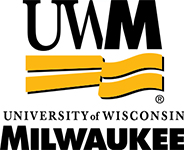Is Vancouver Canada's supervised injection facility cost-saving? Addiction 2010 Aug;105(8):1429-36
Date
07/27/2010Pubmed ID
20653622DOI
10.1111/j.1360-0443.2010.02977.xScopus ID
2-s2.0-77954469769 (requires institutional sign-in at Scopus site) 50 CitationsAbstract
OBJECTIVE: To determine whether Vancouver's Insite supervised injection facility and syringe exchange programs are cost-saving--that is, are the savings due to averted HIV-related medical care costs sufficient to offset Insite's operating costs?
METHODS: The analyses examined the impact of Insite's programs for a single year. Mathematical models were used to calculate the number of additional HIV infections that would be expected if Insite were closed. The life-time HIV-related medical costs associated with these additional infections were compared to the annual operating costs of the Insite facility.
RESULTS: If Insite were closed, the annual number of incident HIV infections among Vancouver IDU would be expected to increase from 179.3 to 262.8. These 83.5 preventable infections are associated with $17.6 million (Canadian) in life-time HIV-related medical care costs, greatly exceeding Insite's operating costs, which are approximately $3 million per year.
CONCLUSIONS: Insite's safe injection facility and syringe exchange program substantially reduce the incidence of HIV infection within Vancouver's IDU community. The associated savings in averted HIV-related medical care costs are more than sufficient to offset Insite's operating costs.
Author List
Pinkerton SDMESH terms used to index this publication - Major topics in bold
British ColumbiaCost Savings
Cost-Benefit Analysis
HIV Infections
Health Care Costs
Humans
Incidence
Models, Statistical
Needle Sharing
Needle-Exchange Programs
Prevalence
Substance Abuse, Intravenous
Syringes
Urban Population









